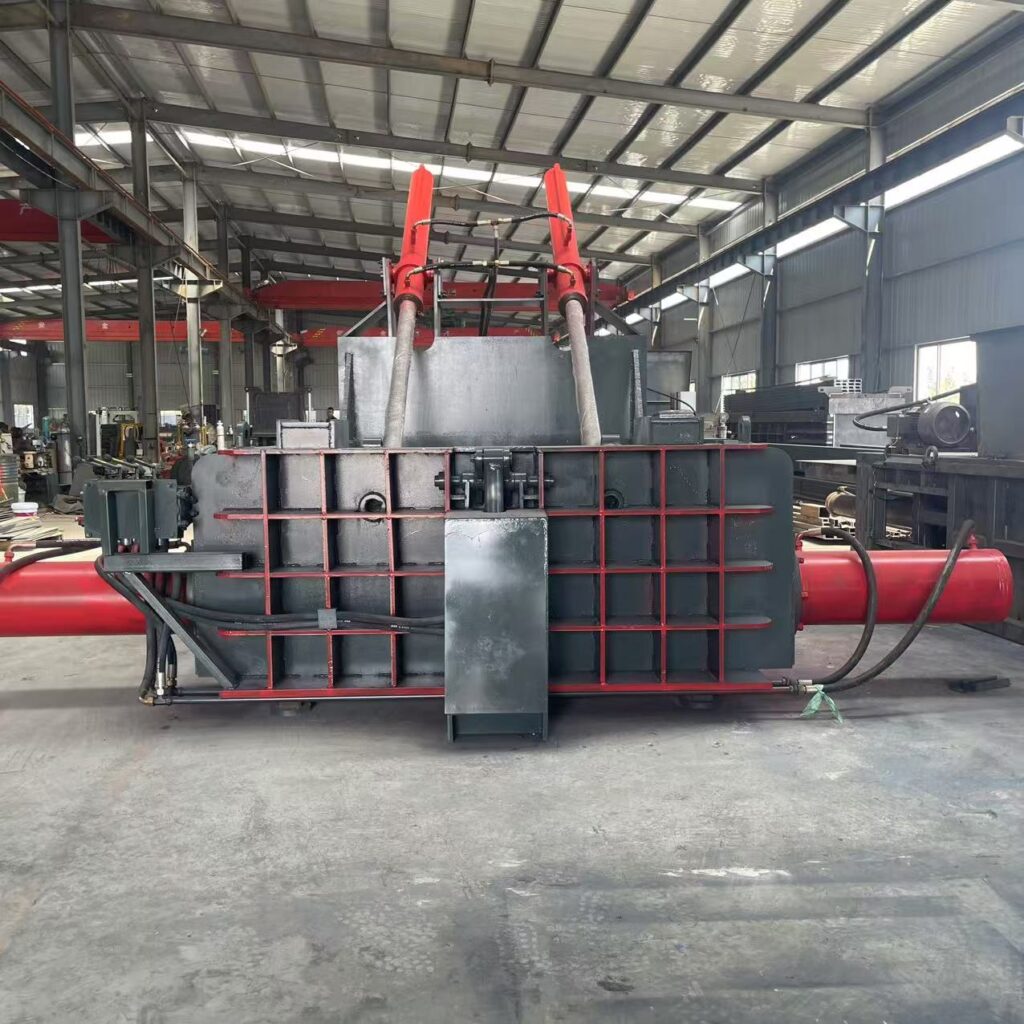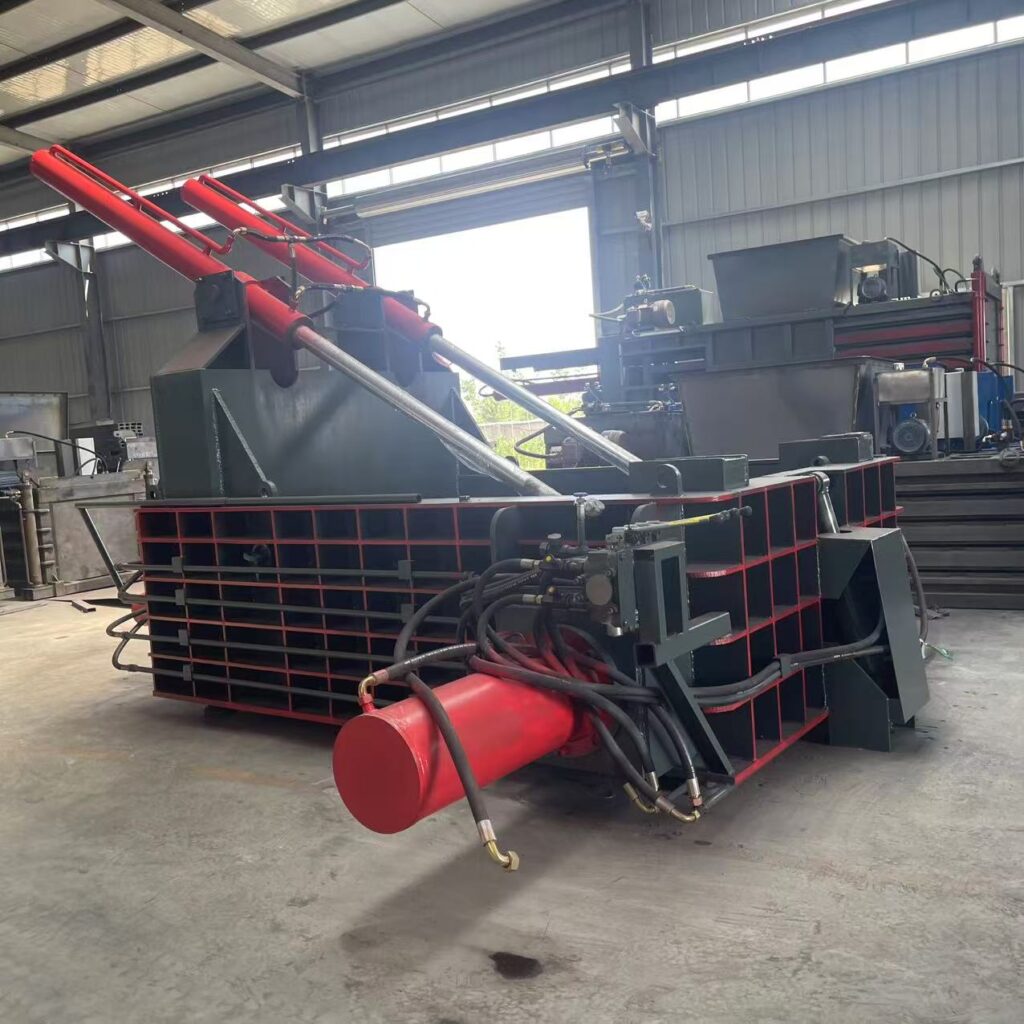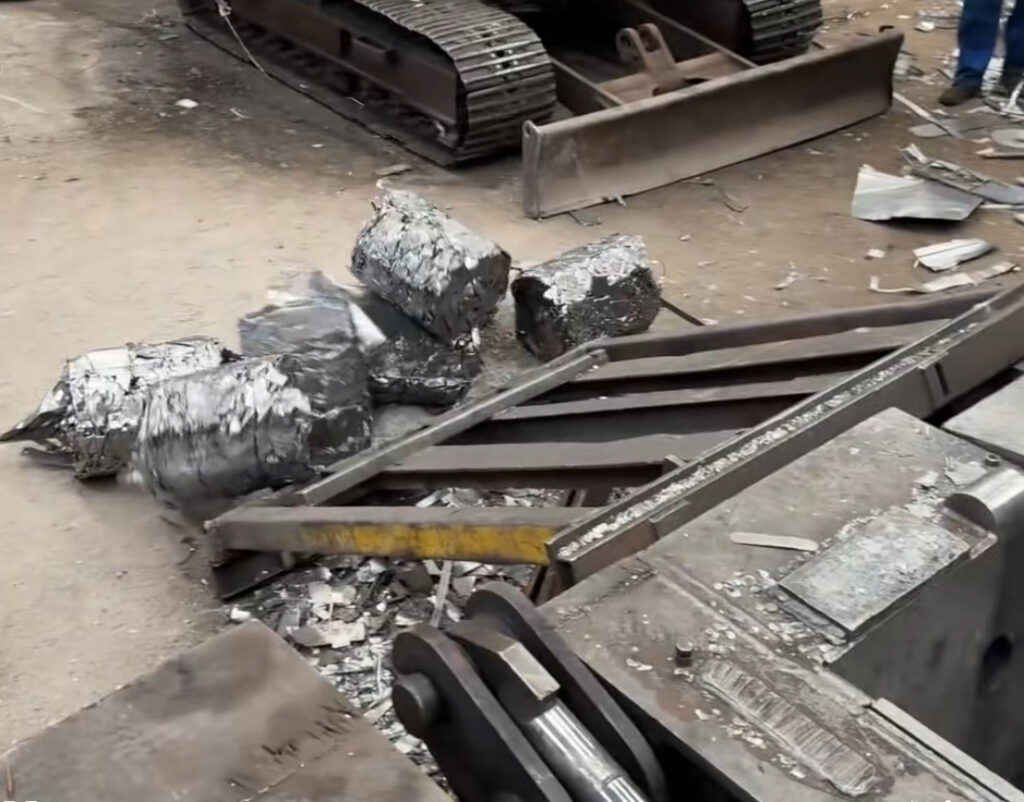Introduction
In today’s industrial world, the demand for efficient recycling and waste management equipment continues to grow. One of the most essential machines in this field is the metal baler — a powerful piece of equipment designed to compress scrap metal into dense, manageable bales for easy storage, transport, and resale.
However, investing in a brand-new metal baler can be costly, especially for small or medium-sized recycling facilities. This is where the used metal baler machine becomes an attractive and practical alternative. Purchasing a second-hand unit can deliver impressive performance, reliability, and savings — if chosen wisely and maintained properly.
In this article, we’ll explore the applications, benefits, usage tips, buying guidelines, and maintenance advice for used metal baler machines.
What Is A Metal Baler Machine?

A metal baler is a hydraulic machine used to compress various metal scraps — such as aluminum, steel, copper, or iron — into compact bales. These bales are easier to handle, store, and transport, and they also fetch higher prices from recycling plants.
The baler works by applying powerful hydraulic pressure through one or multiple cylinders to squeeze the material inside a compression chamber. Once compacted, the bale is tied or ejected automatically, depending on the model type (vertical, horizontal, or automatic).
Applications Of Metal Baler Machines
Used metal balers are widely applied in multiple industries where metal waste needs to be managed efficiently. Common usage scenarios include:
1. Scrap Metal Recycling Yards
Recycling companies use balers to process steel scraps, copper wires, aluminum cans, and other metals into dense bales, maximizing storage space and logistics efficiency.
2. Automotive Dismantling Plants
Car dismantlers use metal balers to compact car shells, body panels, and engine parts after valuable components are removed. This makes it easier to ship bulk metal to smelters.
3. Manufacturing Facilities
Factories that produce large amounts of metal waste — such as machining chips, stamping leftovers, or defective components — can reuse or resell baled scrap for recycling.
4. Construction And Demolition Sites
Construction firms often deal with metal beams, pipes, and rebar waste. A used metal baler can efficiently compress this material for disposal or recycling.
5. Metal Trading Companies
Traders who buy and sell scrap metal benefit from baling machines because baled metal reduces transport costs and increases resale profits.
Why Buy A Used Metal Baler?

Purchasing a used metal baler machine offers several advantages beyond the obvious cost savings.
1. Lower Investment Cost
A used machine can cost 30%–70% less than a brand-new unit, freeing up capital for other business operations or expansions.
2. Proven Performance
Well-maintained used balers have already been tested in real-world conditions, which means you know their working reliability and productivity.
3. Shorter Lead Time
Used machines are usually available immediately, eliminating the long waiting period required for manufacturing and delivery of new equipment.
4. Environmentally Friendly
Buying a used baler contributes to sustainable industry practices by extending the equipment’s lifecycle and reducing manufacturing-related emissions.
5. Easier Operator Familiarity
Older models often have simpler controls and fewer electronic components, making them easier for operators to learn, use, and maintain.
How To Use A Used Metal Baler Machine
Operating a used baler is similar to running a new one, though some extra attention should be given to inspection and safety. Here’s a simple step-by-step guide:
-
Inspect Before Use – Check the hydraulic oil, pressure gauge, hoses, and power connections to ensure everything is in good condition.
-
Load The Material – Place sorted metal scraps evenly into the feeding chamber. Avoid overloading or inserting non-metallic materials.
-
Start The Compression Cycle – Activate the hydraulic system and allow the cylinder to compress the metal. The control panel or levers will manage the process.
-
Tie Or Eject The Bale – Depending on the machine design, tie the bale manually or let the automatic ejection system discharge it.
-
Check For Irregularities – After each cycle, ensure there are no oil leaks or abnormal noises before starting the next batch.
How To Choose The Right Used Metal Baler
Selecting the right second-hand baler requires careful consideration of both technical specifications and machine condition. Below are key factors to check:
1. Hydraulic Pressure And Power
Higher tonnage means stronger compression. Choose a baler that matches the type of metal you handle (e.g., 100–300 tons for light metal, 400–1000 tons for heavy steel).
2. Bale Size And Output Capacity
Ensure the bale size fits your storage or transport requirements. Also, check the hourly or daily output to meet production goals.
3. Machine Type
-
Vertical Balers – Compact, ideal for small workshops or limited spaces.
-
Horizontal Balers – Suitable for large-scale recycling plants with high throughput.
-
Automatic Balers – For continuous operation and minimal labor.
4. Machine Age And Working Hours
Inspect the manufacturing year, total running hours, and maintenance records. Machines with fewer than 10,000 working hours usually have a longer remaining life.
5. Hydraulic System Condition
Examine cylinders, pumps, and valves. Minor leaks can be repaired, but major cracks or pressure losses indicate wear and potential replacement costs.
6. Availability Of Spare Parts
Choose brands with reliable after-sales support and easy-to-find spare parts to minimize downtime.
Maintenance Guide For Used Metal Balers

Proper maintenance is crucial to keep your used baler performing efficiently for years. Follow these essential guidelines:
1. Regular Lubrication
Ensure all moving parts, hinges, and joints are properly greased to minimize friction and wear.
2. Hydraulic Oil Management
Check hydraulic oil levels weekly. Replace oil and filters every 6–12 months, depending on usage intensity. Contaminated oil reduces pressure efficiency.
3. Inspect Hoses And Seals
Hydraulic leaks are the most common issue. Replace worn seals and hoses promptly to prevent pressure loss or safety hazards.
4. Clean The Machine
Remove metal residues and dust regularly, especially around sensors and cylinders. Clean equipment performs better and lasts longer.
5. Electrical System Check
Inspect control panels, switches, and motor connections. Replace faulty components immediately to avoid machine downtime.
6. Scheduled Servicing
Arrange periodic professional inspections to test pressure systems, valves, and automation controls.
Advantages Of Properly Maintaining A Used Metal Baler
Regular maintenance not only extends the machine’s lifespan but also provides tangible business benefits:
-
Higher Productivity: Smooth operation means consistent output.
-
Lower Repair Costs: Early detection prevents expensive breakdowns.
-
Better Safety: Well-maintained systems reduce risk of hydraulic failure.
-
Improved Energy Efficiency: Clean and properly oiled systems consume less power.
Conclusion
Buying a used metal baler machine is a smart decision for recycling businesses that want to balance performance, affordability, and sustainability. With proper selection, careful inspection, and consistent maintenance, a second-hand baler can deliver years of reliable service — compressing scrap efficiently, reducing waste, and boosting profits.
Whether you’re managing a recycling yard, metal trading company, or manufacturing plant, investing in a quality used baler not only saves money but also contributes to a greener, more resource-efficient future.
